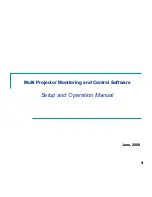
Figure 3.8. Completing Installation
2. Installation on Red Hat Enterprise Linux
To install Enterprise Security Client and its supporting components on Red Hat Enterprise
Linux, do the following:
NOTE
If the
up2date
utility was already used to install Enterprise Security Client, there
is no need for further installation; the client has already been installed. The
following procedure is for installing from a CD-ROM image.
1. Copy the Enterprise Security Client installation RPMs packaged with Red Hat Certificate
System.
2. Install the RPMs as
root
in the following order:
Installation on Red Hat Enterprise Linux
15
Summary of Contents for CERTIFICATE SYSTEM ENTERPRISE - SECURITY GUIDE
Page 2: ...Red Hat Certificate System Enterprise Security Client Guide ...
Page 4: ...Red Hat Certificate System Enterprise Security Client Guide ...
Page 6: ...vi ...
Page 10: ...4 ...
Page 12: ...6 ...
Page 18: ...Figure 3 5 Beginning Installation Chapter 3 Installation 12 ...
Page 26: ...20 ...
Page 59: ...Index 53 ...
Page 60: ...54 ...
















































